|
Article I: Olmsted County Dedicated to Protecting Air, Soil, and Water
Article II: Stop by our Booth at the Olmsted County Fair
Article III: Free Well Water Screening for Nitrates
Article IV: What's in Our Garbage? - 2019 Waste Composition Study
Article V: Disposal Discussion: Brush
Olmsted County Dedicated to Protecting Air, Soil and Water
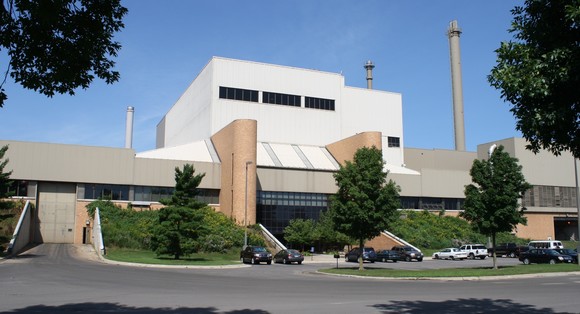 Olmsted Waste-to-Energy Facility; photo credit: Sharon Schriever
Olmsted County has been and will always be committed to protecting the people and environment in our communities. We continue to make investments in the resources and infrastructure we need to ensure our air, soil and water are protected not only now, but for future generations.
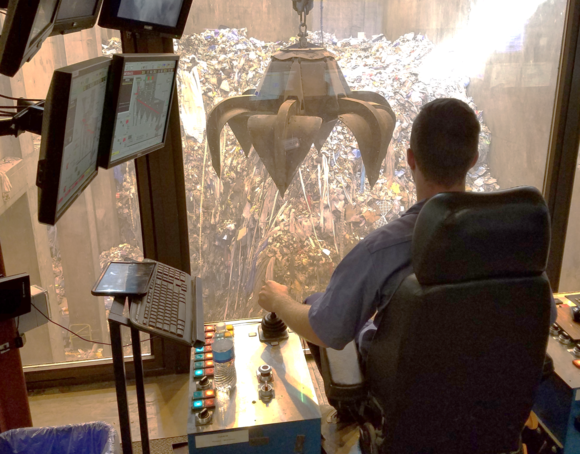 An operator guides the "claw" from the OWEF Control Room; photo credit: Anthony Wittmer
The Olmsted Waste-to-Energy Facility (OWEF) began operation in 1987. Minnesota has seven WTE plants, more than the rest of the Midwest region combined; however, the U.S. remains behind the rest of the world with less than 100 WTE plants nationwide.
At the Olmsted County Waste-to-Energy Facility (OWEF), the county’s solid waste is burned to create steam and electricity, providing energy to more than 30 buildings in Rochester. Through that process, the volume of trash is reduced by about 90 percent, leaving only about 10 percent in the form of ash (which is deposited in an environmentally protective ash monofill at the Olmsted County Kalmar Landfill).
The OWEF helps us preserve space at the Kalmar Landfill. Without it, this landfill would have been filled to capacity by 1997! Because we burn the trash to create energy, we are reducing greenhouse gases that would otherwise be created by waste decomposing in our landfill.
Under the federal Clean Air Act, WTE facilities are required to be equipped with the most modern air pollution control technology available to ensure emissions are safe for human health and the environment. The OWEF has robust pollution control and capture technology and is in compliance with all state and federal air emission standards.
We operate the OWEF safely and efficiently to ensure emissions continue to be well below permitted limits. We have well-trained workers that properly operate OWEF equipment and state-of-the-art pollution control systems that control and/or capture extremely small particulate matter, acid gases, metals and dioxins.
In Olmsted County, we take pollution control very seriously. We continue to monitor advancements in pollution control technology to determine the feasibility of making additional voluntary reductions in air pollution.
While our best option is always reducing the amount of waste generated, we must also use all our local resources, including solid waste, to its fullest, instead of shipping it off to other communities or burying the material away for future generations to deal with. Above all, we remain committed to managing as much waste as we can above ground while meeting or exceeding all environmental standards.
Stop by Our Booth at the Olmsted County Fair
July 22 - 28
Building Hours | 10:00 AM - 8:30 PM
The Olmsted County Free Fair runs July 22 - July 28, 2019. As in past years, the Environmental Resources Department will host an educational booth in the Conservation Building throughout the week. The Conservation Building is located in the northeast corner of the fairgrounds at the intersection of 14th St SW and Fairgrounds Ave SE.
The Conservation Building will host a variety of educational displays as well as daily stage presentations.

Stop by for Our Presentation | July 25th | 6:00 PM
At some point, most of us will need to dispose of… (fill in the blank). Whether it’s household garbage, an old washing machine, or a can of paint, Olmsted County’s Integrated Solid Waste Management System provides a Proper Place for Your Waste. In this presentation, we will take an in-depth look at the unique services provided by the Olmsted County Recycling Center Plus, Hazardous Waste Facility, Yard Waste Compost Site, Waste-to-Energy Facility, and Kalmar Landfill. Time will be set aside to discuss items that should and should NOT be placed in your curbside garbage & recycling containers. Proper waste management helps protect our environment and waterways!
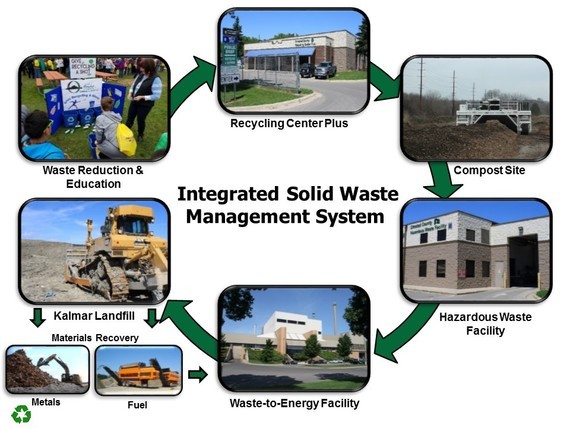
2019 Conservation Building Programming
Tuesday, July 23
4:00 PM: Snakes of the Blufflands – Sara Holger - DNR
6:00 PM: Birds of Prey – Olmsted County Parks
.....................................................................................................................................................
Wednesday, July 24
Noon: What is the City of Rochester's greenhouse reduction goal? – Kevin Bright - DMC
2:00 PM: Emerald Ash Borer Management Considerations for Private Property Owners – Jeff Haberman - Rochester Forestry
4:00 PM: Models of Community Compost Exchange and Cooperative Composting – Christopher Brenna
6:00 PM: Discovery, Exploration, and Science in 37 miles of Cave Passages – Martin Larsen - Olmsted SWCD
.....................................................................................................................................................
Thursday, July 25
10:00 AM – 8:00 PM: Free Well Water Screen for Nitrates
Noon: Rochester's Water Cycle Games – Stephanie Hatzenbihler - Rochester Public Works
2:00 PM: Kids Nature Journal – Sandy Bauter - Master Naturalist
4:00 PM: Snakes – Olmsted County Parks
6:00 PM: Trash Talk: Finding the Proper Place for Your Waste in Olmsted County – Anthony Wittmer - Olmsted County Environmental Resources
.....................................................................................................................................................
Friday, July 26
2:00 PM: Snake Presentation – Lori Forstie - Quarry Hill
4:00 PM: Youth Hunting Opportunities in Olmsted County – Clint Fitzgerald - DNR Conservation Officer
6:00 PM: Feeding the Birds – Terry Grier - Zumbro Valley Audubon
.....................................................................................................................................................
Saturday, July 27
Noon: What is the Izaak Walton League – David Marks - Izaak Walton League
4:00 PM: Driving Our Children to a Better Tomorrow – Ben Wong - Electric Car Club
Free Well Water Screening for Nitrates
The Southeast Minnesota Water Analysis Lab (SEMWAL) and Olmsted County Public Health (OCPHS) are offering free water testing for nitrates for individuals who get their water from a private well. The process is quick, easy and convenient. Water samples need to be collected in a clean, never used, disposable receptacle (e.g., water-tight quart-size plastic bag) and brought to the Public Health booth/tent. Results will be provided within 5 minutes. Staff will also provide information about water quality, the health risks of nitrates, and how they may indicate additional concerns. |
|
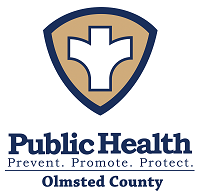 |
Screening Locations and Times
Olmsted County Fair - Thursday, July 25 | 10:00 AM - 8:00 PM
(Conservation Building)
Rochester Farmers Market - Saturday, August 10 | 8:00 AM - Noon
Oronoco Gold Rush - Friday, August 16 | 10:00 AM - 4:00 PM
Rochester Farmers Market - Saturday, August 17 | 8:00 AM - Noon
Rochester Farmers Market - Saturday, August 24 | 8:00 AM - Noon
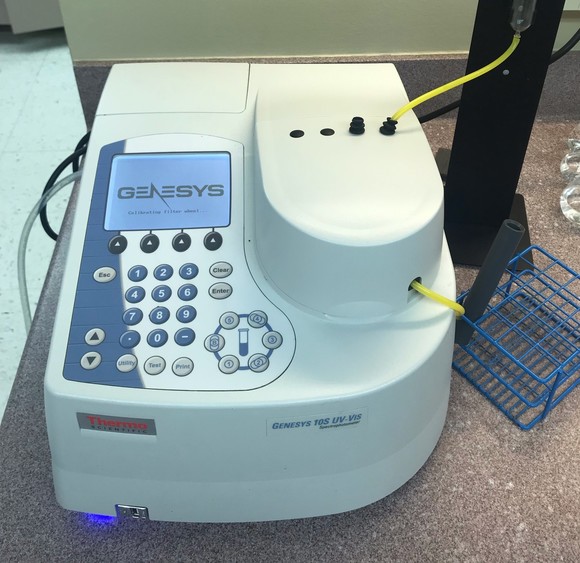 A spectrophotometer is used for nitrate testing; photo credit: Austin Burridge
What's in Our Garbage? - 2019 Waste Composition Study
The composition of our waste is constantly changing. New products are introduced while others are phased out. This presents a challenge to the garbage and recycling industry as it can be difficult to process new materials with existing infrastructure. To better understand what's in our waste, the Olmsted County Environmental Resources Department conducts a "waste audit" every five years. The audit's findings allow our solid waste facilities to plan for and adapt to changes in the composition of our garbage. The results also provide insight for our outreach and educational campaigns.
Sorting Process
Olmsted County contracted with GRG Analysis—a company that specializes is waste audits—to sort and classify the waste brought to the Olmsted Waste-to-Energy Facility (OWEF). Garbage was sorted into 33 categories within the following groups: paper, plastics, organics, inorganics, metals, glass, other. Over the course of a week, the group classified approximately 5.5 tons of waste!
 GRG Analysis sorting waste into categories at the OWEF; photo credit: Anthony Wittmer
Results
 Key Takeaways
- Organics as a percent (48%) of the garbage have been trending up over the last ten years.
- Food waste from businesses and residences makes up the largest portion of organic waste.
- Yard waste (primarily grass clippings at this time of year) comprised nearly 10% of our waste. Grass clipping should be mulched on-site or brought to the Olmsted County Compost Site.
- Paper and plastic are being found less often in the garbage:
- Percentages of newsprint and high-grade office paper continue to decline but non-recyclable paper (products with limited to no end-markets) still constitute a sizable portion of our garbage.
- Plastic containers continue to be light-weighted which yields less tonnage.
- Recycling participation rates have risen over the last 10 years; this has helped reduce the amount of recyclable material in our garbage.
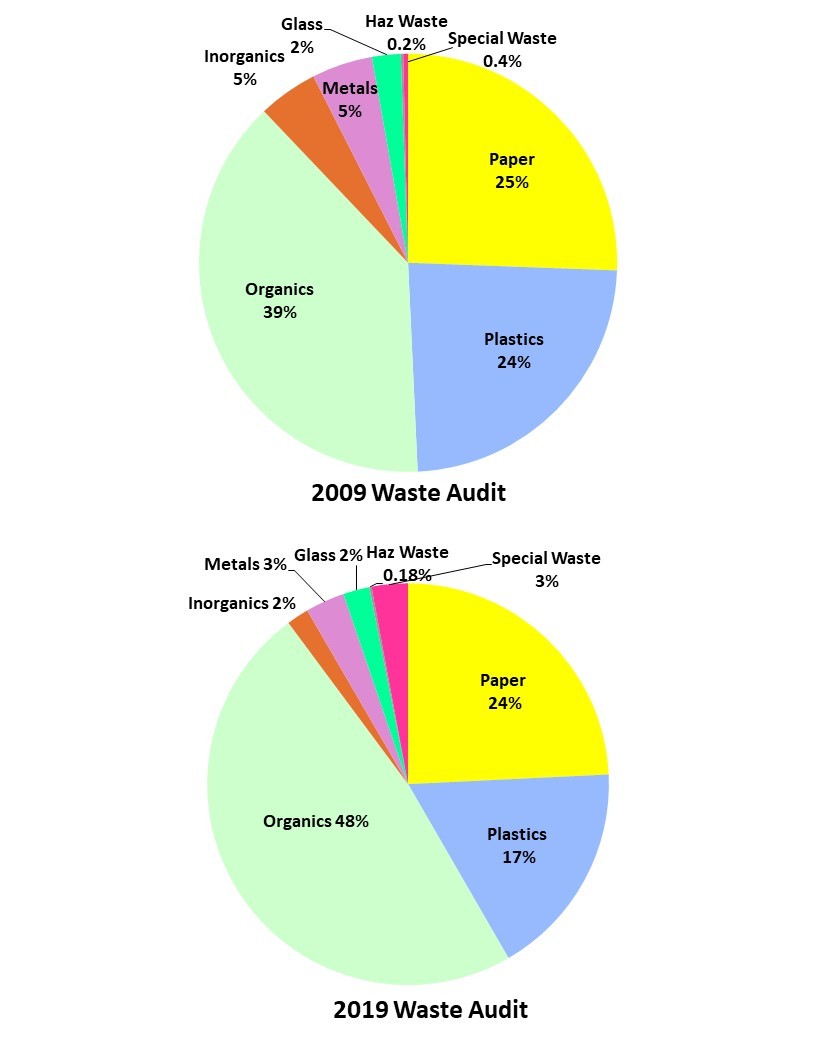 "What's the Weirdest Thing You've Found?"
The GRG Analysis team has been conducting waste audits across the country for approximately 30 years! Needless to say, they've seen a thing or two. Judy Gilow, the owner and team lead, listed some of the team's more memorable finds:
- wedding dresses and tuxedos
- antiques
- brass knuckles and switchblades
- a display funeral vault
- miniature working cannon (approximately 12")
Judy also commented on the trends she's seen. "We see a lot less recyclables and hazardous materials in the garbage." This can be attributed to increased recycling participation, better awareness of proper disposal habits, and investments in solid waste drop-off facilities—like the Olmsted County Hazardous Waste Facility.
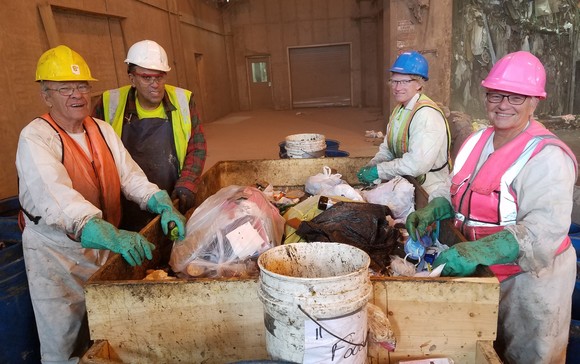 GRG Analysis sorting waste into categories at the OWEF; photo credit: Anthony Wittmer
Disposal Discussion - Brush
Brush is a common contaminant at the Olmsted County Compost Site. It decomposes much slower than leaves or grass clippings which means it has to be screened out of the finished compost.
Household quantities of brush can be brought to the Olmsted County Recycling Center Plus for a fee of $4.00 per 30 gallons up to 120 gallons. At larger quantities, brush is assessed a fee of $24.00 per cubic yard. Be sure to check local listings for permitted brush disposal facilities as a lower-cost option.
"Incidental quantities" (roughly a handful of twigs/sticks) can be mixed in with your curbside garbage.
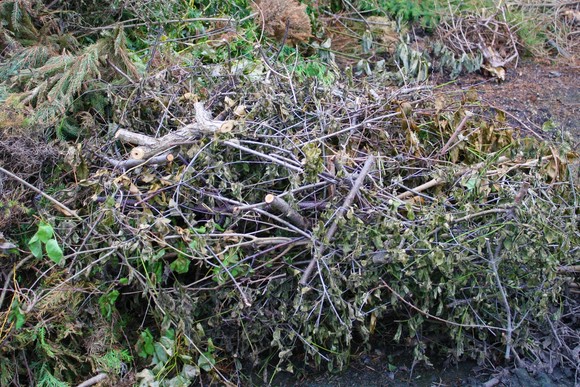 Brush that's been improperly dropped off at the Compost Site; photo credit: Anthony Wittmer
|